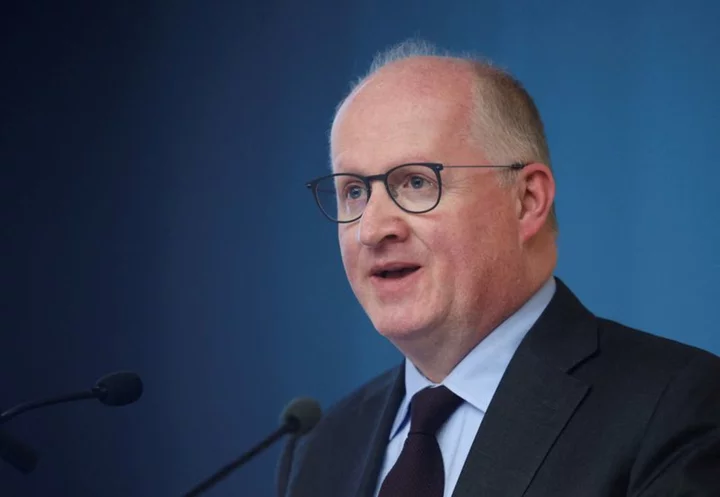As the head of her own marketing agency in Los Angeles, Shaina Renee Manlangit has made it a mission to elevate Filipino American talent and culture. But, it occurred to her last year, she still had never actually been to the Philippines.
Knowing there were other young Filipino Americans who felt that gap, the 28-year-old promptly “cold-emailed” the Philippine Department of Tourism. That led to her visiting the country in March for the first time.
“It was a very big cultural shock,” Manlangit said. “Once I got a taste of it, I just wanted to learn more.”
She tasted regional foods, saw both cities and beaches. She learned that the Philippines is a top diving destination, and now she is trying to learn the Tagalog language. Manlangit has since parlayed her journey of discovery into a collaboration with the government to launch trips especially geared toward young Filipino Americans.
The Philippines has long been interested in attracting Filipino Americans to come and add to the economy, but its incentives have mostly drawn retirees or immigrants catching up with relatives. Today, they are aiming a younger generation of Filipino American professionals who live on TikTok and Instagram.
Two Filipino American influencers were recruited to join a group VIP tour in July. Manlangit also has a state-endorsed, eight-day tour slotted for 2024 through the capital city, Manila, and the islands of Cebu and Coron is being marketed as a vibrant introduction for any Filipino American willing to join.
For some young Filipino Americans, or Fil Ams, unfamiliarity with their parents’ home country and language makes the idea of planning a trip there overwhelming. But younger generations also have grown up encouraged to show cultural pride. So as adults, some are searching for a connection to the Philippines.
October is Filipino American History Month, and Manlangit is hoping her peers might focus on exploring their family roots through travel.
Alexander Martin Jr., 31, has already committed to one of the 10 spots on the trip she designed. Born and raised in San Leandro, California, the entrepreneur only knows the Philippines from family photos and stories. School, sports and then work always seemed to make it impossible to squeeze in a visit.
Also, the thought of planning a trip to the Philippines was intimidating somehow. It feels reassuring to be going with other young Filipino Americans.
“I’m just hoping to get familiar with my culture, and be familiar with it so one day I can bring my son to all these places I got to experience,” Martin said.
Nobody was more elated than his mother.
“If I were to go with family,” Martin said, “it’s gonna be like a lot of visiting cousins or visiting family out there. But this trip, she’s excited that I get to experience like the whole Philippines in its entirety.”
The Philippines’ efforts to integrate Filipinos in America goes back more than a century. After the Philippine-American war and the ensuing U.S. occupation, both countries passed the Pensionado Act in 1903. Exchange students from the Philippines were chosen to travel to the U.S. The goal was they would further their education and advocate for the American way of governing upon their return.
“Those were like the first sort of American or Americanized Filipinos,” said Evelyn Ibatan Rodriguez, a sociology professor and part of the University of San Francisco’s Philippine Studies Program. “I think that kind of sets the tone, this idea that what is native to the Philippines is less than.”
In 1973, Philippine President and dictator Ferdinand Marcos, whose son and namesake is the current president, enacted the Balikbayan Program to draw Filipinos residing in the U.S. to come work part-time. Incentives included an extended visa for a year and lower taxes. Roughly 30 years later, President Gloria Macapagal Arroyo’s administration granted dual citizenship to Filipino Americans born in the U.S. after 1973 to a Philippine national.
“That becomes the game changer because then you’ve got U.S. ‘foreign’ Filipinos like myself... who can become dual citizens and then benefit under this Balikbayan legislation,” Rodriguez said.
Rodriguez hadn’t heard of tourism efforts targeting young Filipino American adults. But she knows a lot of college students and college-educated Filipino Americans who have expressed interest in visiting the Philippines. And they want something that isn’t just visiting relatives or playing tourist.
“Coming to university... where Asian Americans are such a significant presence, it’s sort of given them permission to be like, ‘Wait a second, there’s actually something I can learn from the Philippines,’” Rodriguez said. “Not just the Philippines is sort of a ‘charity case.’”
Even Gen Zers with social media may “want more than an Instagram-friendly visit to their parents’ or grandparents’ homelands, she added.
“They want to visit sites that may not be glamorous or photogenic, but that have historical or contemporary significance to Filipino people and society,” Rodriguez said. “They want the chance to learn from and exchange ideas with Philippines-born peers, artists and leaders.”
Among the activities on Manlangit’s planned tour next year are snorkeling, hiking and viewing sites like Fort Santiago in Manila. She said she took into account what tourism officials would like to promote but also what her peers are seeking.
“There’s a lot of room to grow with this,” she said. Someday, she hopes “it’s eventually not just targeting Filipino Americans.”
___
Tang, who reported from Phoenix, is a member of The Associated Press’ Race and Ethnicity team. Follow her on X (formerly Twitter) at @ttangAP.









